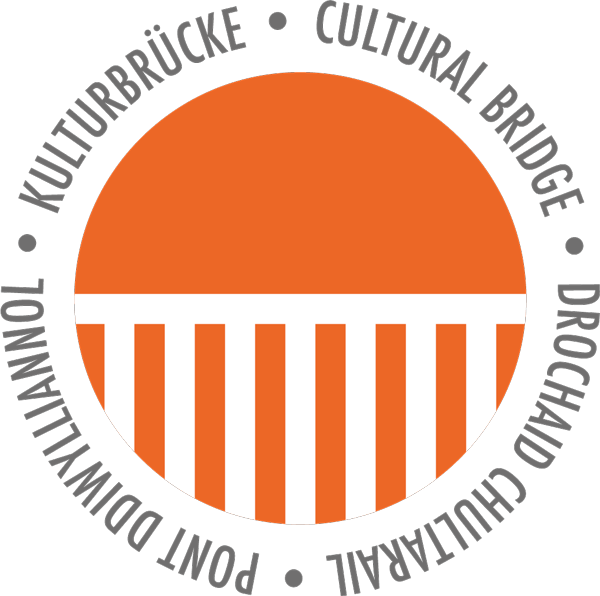Back in Dresden, Frank discussed with Videocity group Andrea (GER) and Polina (UK), what they have learned during their trip to London and exchange with SET. The analysis of the visit is combined with a self-reflection.

Image: The view from SET’s office, Woolwich. © Photo by Andrea Domesle
riesa efau has nearly forgotten its grassroots beginnings through its 30 years of activity as a now established organisation and was reminded of them again during the encounter with London colleagues and discussions with artists.
Everything that was required before 1989: space, freedom of expression, a new society based on social cohesion beyond so-called class boundaries, a connection to the local neighbourhood, art as an inspiration for many and integrated into a society that is also far removed from art, support for young people, children and women, ecological awareness – all have become established in the programme. This is reflected in the 200 workshops per year organised at riesa efau – further education programmes for different local communities at the intersection of art and social needs, which are now an institutional routine.
After the trip, we have been discussing how we could support people from across their communities to develop their creativity and discover their individual voices not only locally, but as well through transnational exchange.
In Saxony in particular, a focus on the UK has been rare until now. Through the collaboration with SET, made possible by Cultural Bridge, we aim to change this and invite more cultural workers and artists from the UK in the future, to present UK perspectives in Dresden.
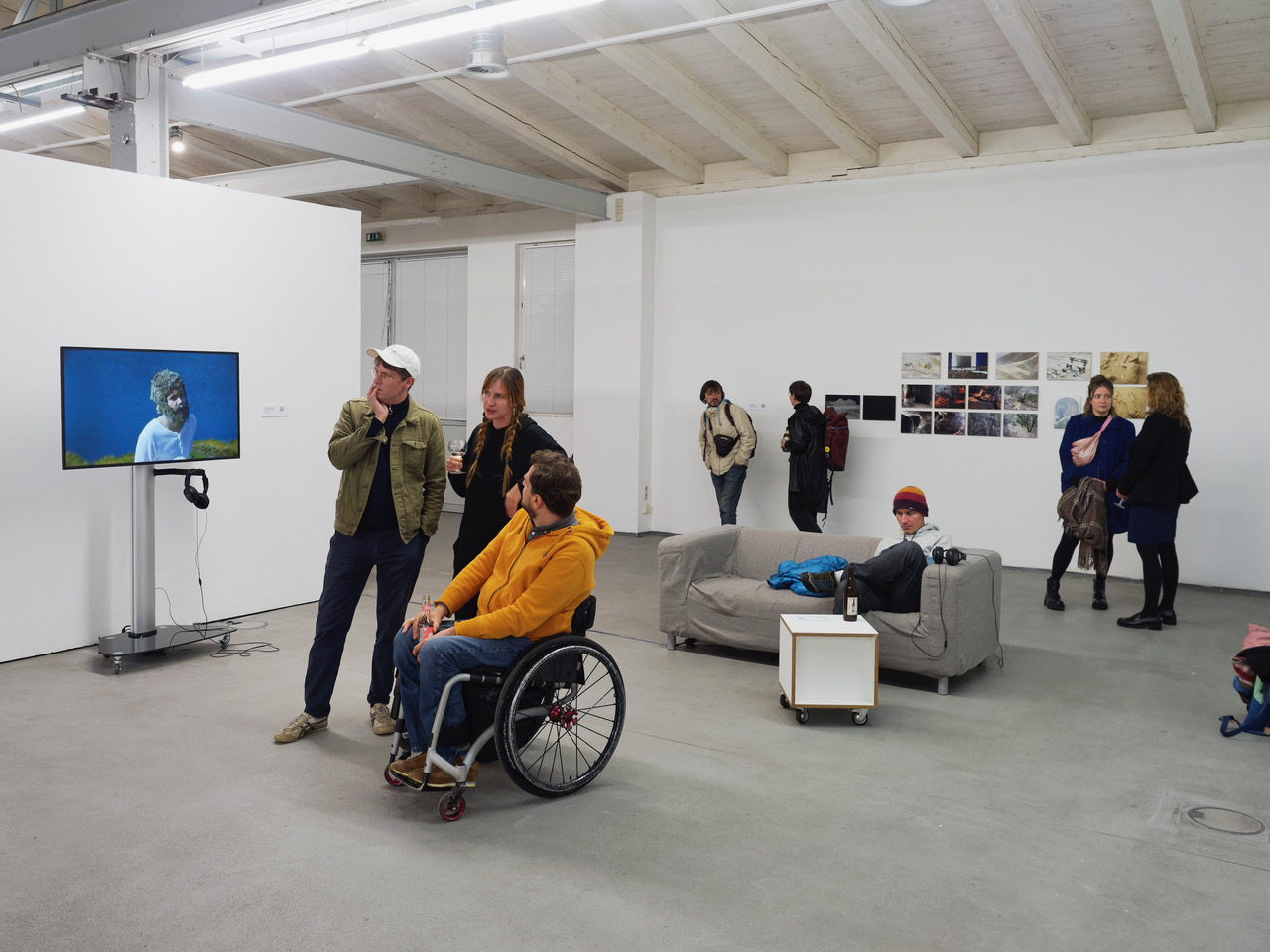
Image: Exhibition “Something with hope”, Motorenhalle Dresden, 20.10.23-25.02.2024. Audience looking onto the video by Hanna Tuulikki (GB). In this show, there is another UK artist Daisy Riley (GB) part of Videocity programme. © Photo by Andreas Seeliger
Empower communities to work together and shape local place and identity
The Motorenhalle has been inviting international artists for many years so that the local audience and local artists have the opportunity to broaden their perspectives, to sharpen their own opinions and thus contribute to finding their own identity.
Up to now, British artists have been poorly represented in the Motorenhalle programme and we want to change that with the help of our colleagues and their network of studio artists. By continuing the exchange, we hope to bring the British perspectives and practices, and their works to Dresden and German audiences.
On the other hand, SET is growing their international exchange with Germany through our collaboration – as a relatively young organisation, our colleagues shared their wish to go beyond their current locally-specific practice. The London context, through its international population and diverse communities, and this is something that we discovered during the PechaKucha and studio visits. In our future projects, we are very interested in continuing exploring how transnational perspectives and projects can foster exchange abroad, as well as in the host institution and connect with communities on site.
New perspectives on connecting arts and society and the role of international artistic exchange
As part of this exchange, we have been inspired by SET and the use of empty buildings to transform areas and create communities. In our work in Dresden, we would like to replicate their approach. However, in our case, this will take the form of a smaller project that opens up new audiences in a different part of the city, perhaps in the city centre.
Currently, the riesa/Motorenhalle team are working at capacity, so this can only be achieved with additional support and Videocity, thanks to their work in public space, are an ideal platform. The international team and network brings together the different cultural views in its various thematic screenings and exhibitions of single-channel videos. Thanks to today's technical possibilities, the medium of video also facilitates easy and rapid transport of works. It is cost-effective and ecological compared to the physical circulation of sculptures or paintings. Artists appreciate it when their work is shown by Videocity in different places and meets an audience unknown to them. Importantly, this is also an opportunity for artists to be confronted and connected with artists they do not yet know. For both artists and curators, interacting with other artists and an unknown audience is very important for further development and career advancement.
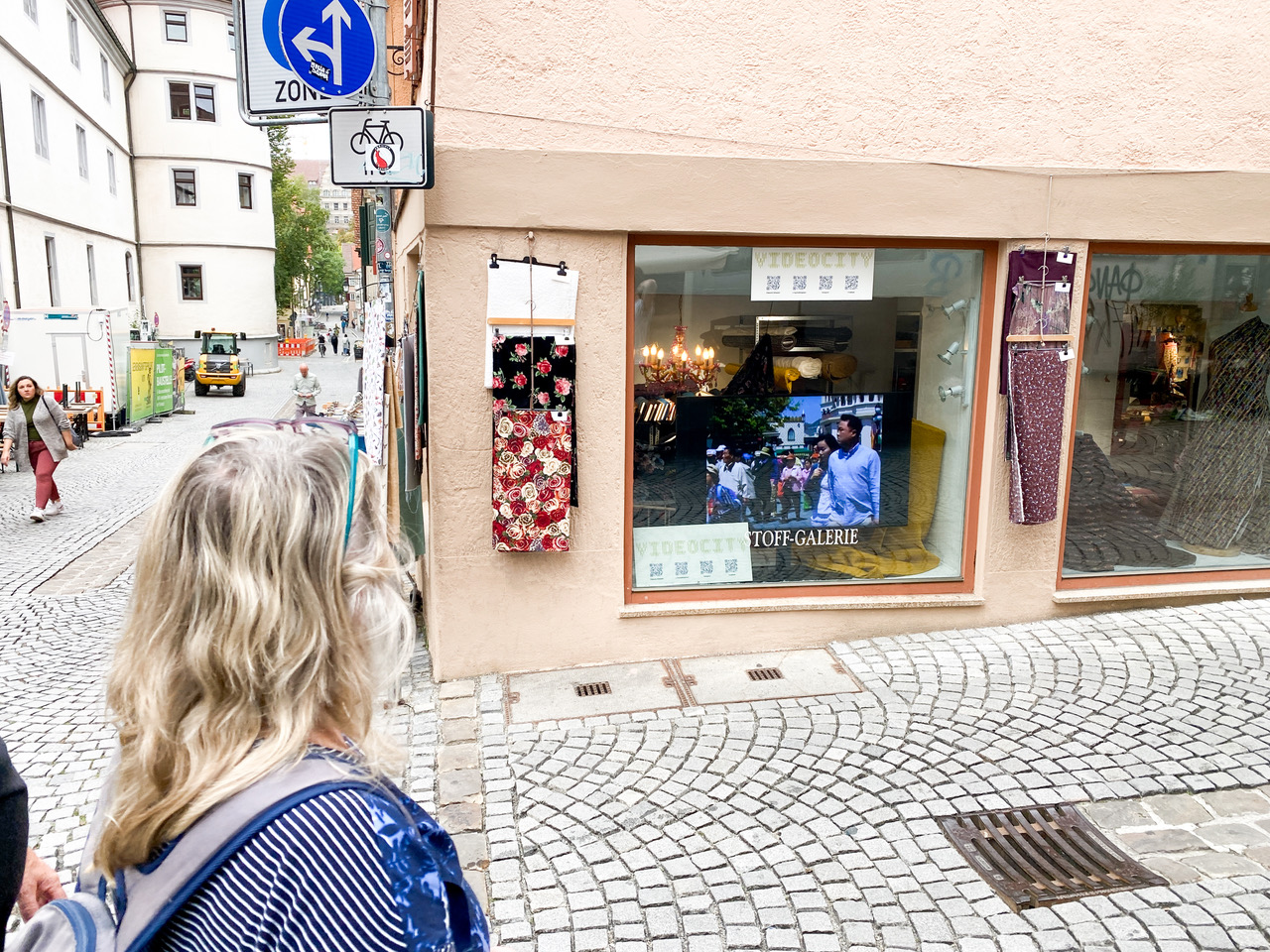
Image: Reference project: “Videocity x Tübingen” exhibition in the city centre of Tübingen 23.8.-23.09.2023. https://www.videocity.org/tuebingen © Photo by Hartmut Schwahn
Diversity of opinion is an endangered commodity in a society characterised by nationalistic attitudes. We want to bring other attitudes to Dresden thanks to the works of artists from other cultures. Especially today, with the renewed shift to the right-wing politics, we find it important to offer the audience and also the local communities perspectives from other and different cultures – as an opportunity for reflection and to always learn about oneself through others and foster mutual understanding. This will be reinforced in future programmes. For more than 30 years of our work, we have found the field of art to be very suitable for this.
Recreating post-industrial spaces and creating new communities

Image: Photo of Videocity’s previous exhibition in the street infront of Motorenhalle – Covid project “Loneliness”. Screening videos onto the closed entrance door 13.01.-01.05.2022 with 40 international artists. https://www.videocity.org/dresden © Photo by Andreas Seeliger
Post-industrial places and communities still exist in Dresden Friedrichstadt, where riesa efau is located; after all, this suburb is a working-class neighbourhood in transition. The Motorenhalle was once a commercial building; the Runde Ecke was a large petrol station built in the 1930s and has also been converted into a multi-purpose event space. The entire neighbourhood is in a state of flux; gaps between buildings are gradually being filled, new residential buildings erected, and roads and pavements repaired. The themes of the exhibitions and workshops at riesa efau also deal with and react to such transformations.
Showcasing artworks and projects that are relevant to the experiences of local communities and resonate with the local changes has been a key approach. Videocity also shares the commitment of communicating with wider audiences and going beyond traditional exhibition spaces and formats to connect with diverse communities and bring video art into daily life. With a focus on socially-relevant curatorial themes (this year – Utopia Today), Videocity’s approach of creating conversations around different futures and societal changes by integrating artistic voices from across different geographic regions has been a successful model and we are excited to integrate a focus on the UK. We would like to specifically start our international focus by showing some of the wonderful artists we met during the SET studio visits and during PechaKucha in 2024.
The role of the grassroots and new uses of public space
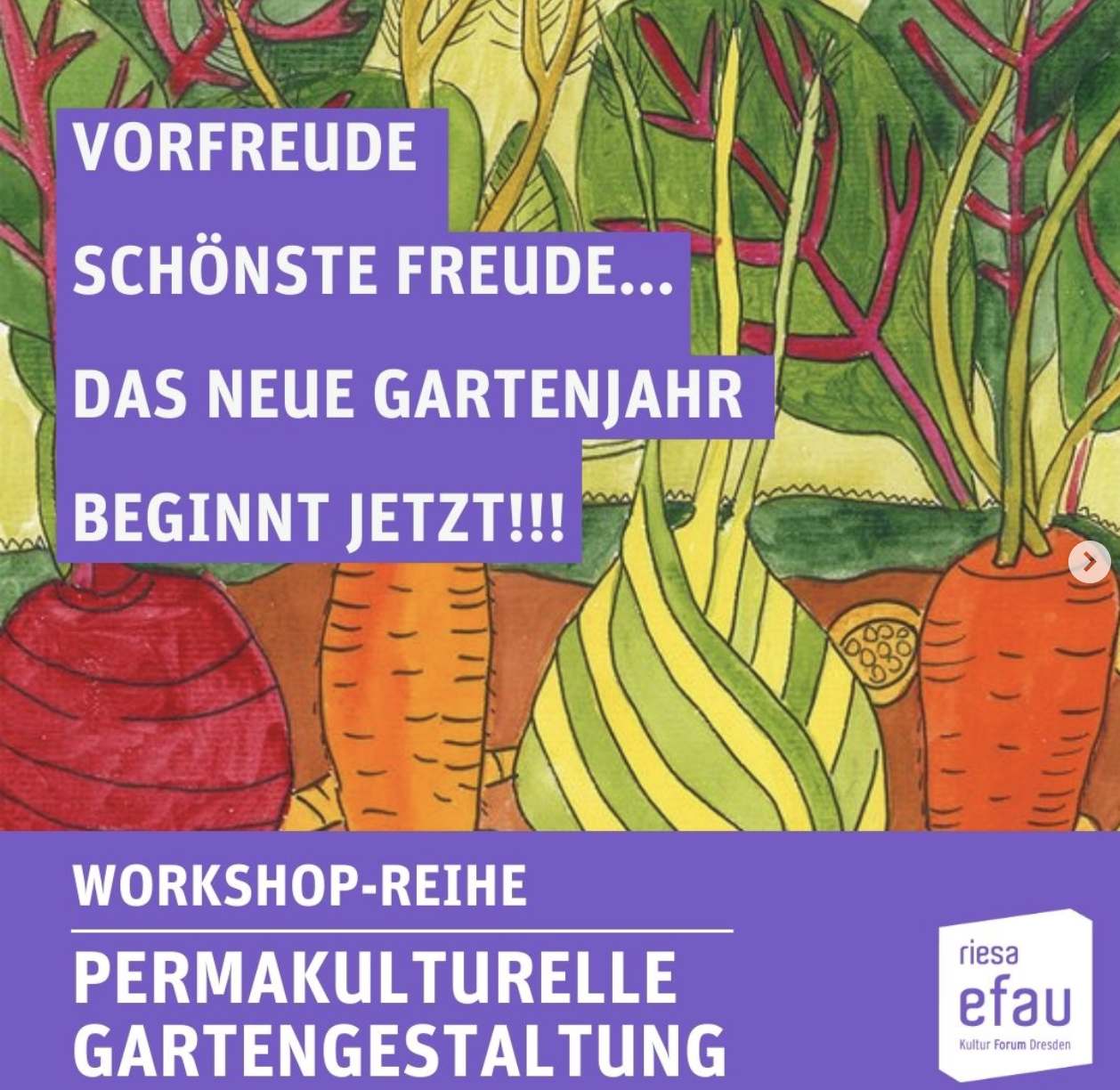
Image: Permaculture workshop at the intergenerational garden, riesa efau, 8 th December 2023 https://www.instagram.com/p/CzsjJqVrBCb/?img_index=1
The riesa efau was occupied in autumn 1989 and an art and cultural centre was developed. Through our continuous work for the last 30 years, we have witnessed the improvement and changes that can be brought to communities through art. We believe that socially-engaged practices and grassroots activism can be transformative and art organisations can be a very suited space for their activities.
In the tradition of the very successful previous RAUM Citybrache project, the current green art intervention on the street between the riesa efau buildings is an exemplary way of dealing with wasteland in Dresden. An intergenerational garden has been developed on a large unused land, managed together with local volunteers. The Kulturhof and the rear courtyard of the site are being transformed into a green oasis with a weekly farmers market.
riesa efau has continued to develop over the past 30 years and has responded to its immediate neighbourhood and the international art scene. However, we are now at a point where we need to revisit our beginnings and check whether we have realised all the ideas we had back then. Can we achieve this in view of the current challenges? We hope to do this thanks to the momentum provided by the exchange with SET and to the concept and help of the international Videocity group.
We are all aware on the importance of collaboration – that we cannot exist on our own; we need to be part of a larger context.
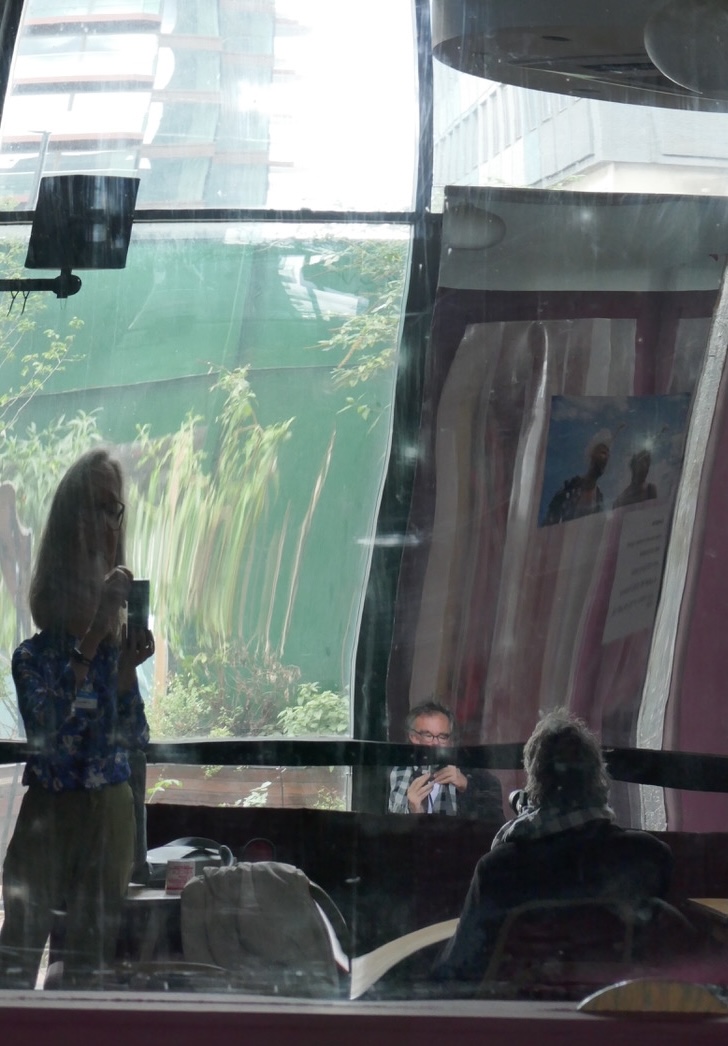
Image: Self-portrait at the canteen in SET Woolwich. © Photo by Andrea Domesle
Top image: Looking out into the street from SET in Central London. © Photo by Andrea Domesle
